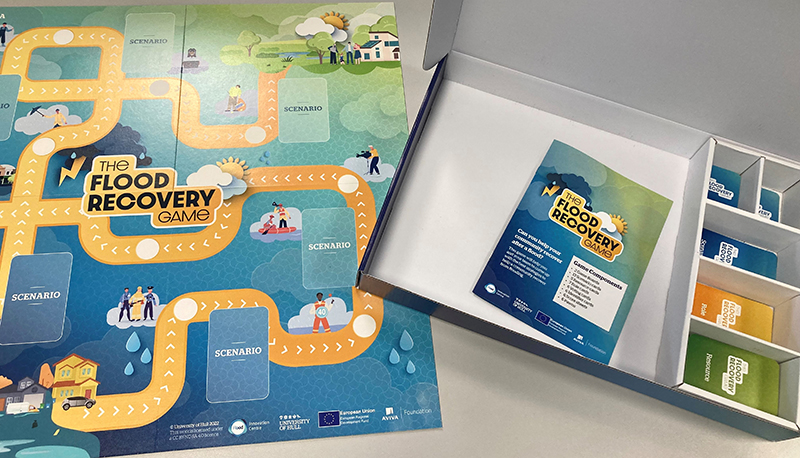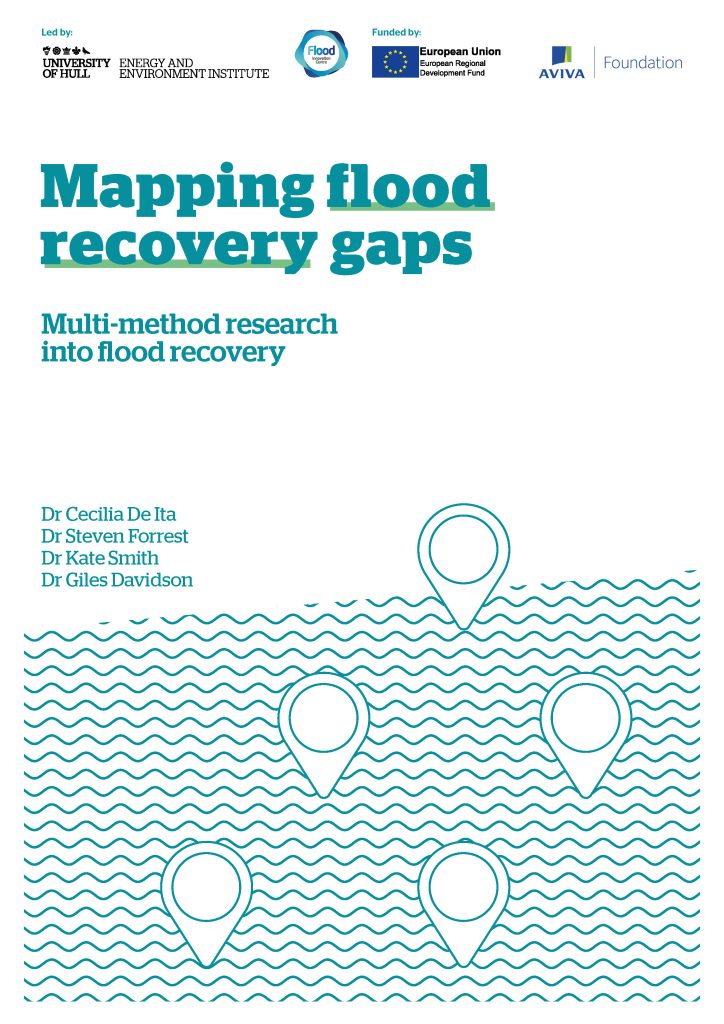MAPPING FLOOD RECOVERY GAPS
Led by:
Currently, post-flood support is fragmented. The insurance industry wants to do more to support their customers to build back better by linking up customers, funding, underwriting and flood protection installers. This presents challenges: synchronising the pay-out timescale from insurers and councils so that flood victims can build back better, understanding the impact of different resilience measures on flood recovery costs, and navigating the UK’s complex landscape of flood management and recovery agencies.
The challenge
PROJECT PARTNERS


FLOOD RECOVERY – A FRAGMENTED LANDSCAPE
According to global records covering the last 20 years, flooding is the most common natural hazard, accounting for 43% of all recorded events.
The UK has experienced unprecedented flooding in recent years. Despite ongoing investment in flood mitigation, the economic costs of dealing with floods can run into the billions: the Environment Agency estimates that the devastating floods of summer 2007 cost a total of £3.2bn, including more than £2bn in costs to homeowners and businesses. This is in addition to the physical and mental health impacts, disruption to routines and supply chains, and an estimated 400,000 of lost school days due to the 2007 floods alone. Severe flooding events are expected to become more common in future.
There is a growing movement towards the idea of ‘building back better’ as part of flood recovery response. Little research has been undertaken into the best way to ‘build back better’ and questions surrounding how authorities and insurers can work with citizens to deliver effective post-flood support.
The solution
PROJECT LEAD
Dr Cecilia de Ita,
Flood Innovation Centre
ACADEMIC LEAD
Dr Steven Forrest,
University of Hull
PROJECT TEAM
Pip Betts,
Flood Innovation Centre
Dr Giles Davidson,
University of Hull
David Ovuakporie,
Flood Innovation Centre
Amy Richardson,
Flood Innovation Centre
Dr Kate Smith,
Flood Innovation Centre
BUILDING A PRACTICAL FRAMEWORK FOR BUILDING BACK BETTER AFTER FLOODING
A research partnership has been established, led by the Flood Innovation Centre and Energy & Environment Institute (EEI) to address these problems. The partnership focuses on the immediate aftermath of flood events in the Humber which, outside London, is the UK region most vulnerable to flooding. The partnership will map knowledge and communication gaps to develop a practical framework enabling resources for building back better to be applied effectively after major flood events.
By mapping the gaps in the provision of post-flood support we can establish a basis for insurers to understand which flood resiliency measures are most effective. This also gives us a way to communicate with other agencies, for example local councils, about ways the maximise the effectiveness of post-flood support schemes. Working with partners at Aviva, our research will identify strategies to achieve more sustainable post-flood recovery in flood risk areas. For example, for customers with homes which are more resilient and recoverable, insurers could offer more competitive and tailored flood insurance.
We will employ a variety of research approaches, including structured interviews and the development of a serious board game, which will be utilised in stakeholder workshops to explore various flood recovery scenarios.
The final output of the project will be a place-based toolkit, developed with national and regional stakeholders. This will outline steps for overcoming the more persistent obstacles to effective post-flood recovery. Our plans include assessment of the social value of using this toolkit, continuing the innovative approach of the EEI’s researchers to make their research truly impactful.
Establishing the partnership in the Humber allows us to draw on the expertise within the EEI and the Flood Innovation Centre’s existing local partnerships. With a track record of bringing diverse stakeholders together, the Flood Innovation Centre and EEI are ideal hosts for this partnership. The project team will work closely with key regional stakeholders, as well as insurance industry representatives and third sector actors.

The Results
A PLACE-BASED TOOLKIT FOR NATIONAL ROLL-OUT
Initially, this project will be developed as pilot within the Humber region. Based on historical flood events in the region, which in 2007 impacted 8,600 households, 1,300 businesses and over 90% of Hull’s schools, improving local connectedness of flood-recovery and resiliency resources would deliver significant social value as well to reducing future economic and financial costs of flooding.
This research partnership will engage a wide range of national bodies to amplify its impact. The purpose of developing a protocol from this partnership is to ensure the project is scalable and transferable across different regions. The intention is to develop and test this protocol across a smaller area (the Humber) so that it can then be rolled out and implemented in other areas. Initial estimates project a positive social value return; these benefits would increase proportionately as the pilot was scaled out to other flood-vulnerable areas.
Find out more about the project outcomes and recommendations by reading our Mapping Flood Recovery Gaps report.

